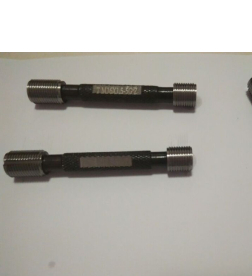พ.ย. . 08, 2024 18:03 Back to list
machinist gauge pins
Understanding Machinist Gauge Pins A Comprehensive Guide
Machinist gauge pins are specialized tools that play a pivotal role in precision machining and quality assurance processes. These pins are primarily used to test, calibrate, or set the limits of various measuring equipment. They provide a reliable standard for ensuring that other equipment meets specific tolerances, allowing for consistency and accuracy in manufacturing operations.
What are Machinist Gauge Pins?
Gauge pins are cylindrical tools made from high-quality materials, usually hardened steel, to withstand wear and tear. They are meticulously manufactured to precise dimensions and are categorized based on their tolerance levels. The most common types are the go/no-go pins. The go pin is designed to fit into a specific hole or slot, whereas the no-go pin will not fit if the dimensions of the part are within specified tolerances. The concept is simple if a go pin fits and a no-go pin does not, then the workpiece is acceptable.
Applications of Gauge Pins
Gauge pins find extensive use across various industries, including automotive, aerospace, and manufacturing. They serve multiple functions
1. Quality Control In quality assurance labs, machinist gauge pins are used to check the accuracy of machining processes and to ensure that parts meet the required specifications. This is crucial in industries where precision is non-negotiable.
2. Setup and Alignment During the setup of machinery, gauge pins help align critical components. They allow machinists to establish reference points for machining operations, minimizing the risk of errors.
3. Testing and Calibration Gauging pins are also employed to test and calibrate measuring tools and equipment. This ensures that tools like calipers and micrometers are providing accurate measurements.
4. Dimensional Inspection They are an integral part of dimensional inspection processes, ensuring that products conform to stringent tolerances defined in engineering drawings.
Types of Machinist Gauge Pins
machinist gauge pins

Machinist gauge pins come in various shapes and sizes, tailored to meet specific needs
. Some common types include- Solid Pins These are unaltered pins made to specific dimensions, frequently used as a standard in quality control.
- Taper Pins Featuring a slight taper, these pins can fit into tapered holes, assisting with alignment.
- Threaded Pins These pins have threaded ends that allow for easy adjustment or attachment to other tools during inspections.
- Precision Pins Designed for high-stakes applications where minute tolerances matter, these pins can offer accuracy down to micrometers.
Advantages of Using Gauge Pins
The primary advantage of utilizing machinist gauge pins is the assurance of consistent quality. By regularly testing tools and parts with gauge pins, manufacturers can detect deviations early in the manufacturing process. This proactive approach minimizes waste and rework, leading to improved productivity and cost savings. Additionally, gauge pins are easy to use and understand, making them accessible for machinists of all levels of expertise.
Maintaining Gauge Pins
To maximize the lifespan and effectiveness of gauge pins, proper maintenance is essential. Always store them in protective cases to avoid damage. Keep them clean and free from contaminants that could affect accuracy. Regularly inspect pins for wear and replace any that show signs of significant degradation.
Conclusion
Machinist gauge pins are indispensable in the world of precision engineering. From quality assurance to the calibration of tools, their applications are vast and invaluable. By understanding their functionality and maintaining them properly, manufacturers can significantly enhance the quality and precision of their production processes. Investing in high-quality gauge pins not only improves the reliability of measurements but also contributes to overall operational efficiency in machining environments.
-
Precision Manufacturing with Advanced Spline Gauge DesignNewsJul.31,2025
-
Industrial-Grade Calibrated Pin Gauges for Exact MeasurementsNewsJul.31,2025
-
Industrial Filtration Systems Depend on Quality Filter DN50 SolutionsNewsJul.31,2025
-
High-Performance Gate Valve WholesaleNewsJul.31,2025
-
Granite Surface Plate The Ultimate Solution for Precision MeasurementNewsJul.31,2025
-
Granite Industrial Tools The Ultimate Guide for Bulk BuyersNewsJul.31,2025
Related PRODUCTS









